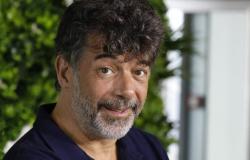The winning project is signed by the duo Pauline Boudry and Renate Lorenz
On December 15, 2023, the Department of Finance and Energy of the State of Valais – Real Estate and Heritage Service (SIP) launched a call for projects by selective procedure in two phases for an artistic intervention (Kunst am Bau) of the site and the building of the new EDHEA campus. Letters to a young artist of the year 2050, a project imagined by Pauline Boudry and Renate Lorenz, was selected among the various proposals for the reflections it conveys on the condition of artist .
The jury, chaired by Jean-Paul Felley, director of EDHEA, was composed of both members of the Real Estate and Heritage Department of the State of Valais (Philippe Venetz, cantonal architect, and Eddy Jollien, project manager), personalities from the art world (Fabrice Gygi, artist, Chantal Prod’hom, former director of MUDAC, Charlotte Laubard, lecturer at HEAD – Geneva, Maéva Besse – substitute -, curator), the head of the art department culture Alain Dubois, the director of the HES-SO Valais-Wallis François Seppey, as well as a representative of the CLR architectural office (Damien Chevalley, architect).
The selection committee unanimously selected the project by Pauline Boudry and Renate Lorenz. Their proposal entitled Letters to a young artist of the year 2050 is inspired on the one hand by the text Woman of the year 2000 written by Carolee Schneemann in 1974, as well as Letters to a young poet (1903-08) by Rainer Maria Rilke who stayed in Veyras in the heights of Sierre. Nearly 50 years after this founding text by the American artist, which evoked the difficulty of being an art student in the 1970s, the two Berlin-based artists in turn wrote a message addressed to a ·e young artist of the future. In addition, they will invite nine other artists and cultural producers from different backgrounds to each submit a letter. One of them will be written by an EDHEA student or collective and selected through a competition with a jury.
A large LED screen, located in the school hall, will broadcast the ten texts. They will appear at certain times of the day, as if they were being written before our eyes. All will be displayed in their original language – for example English, Arabic, Spanish or Farsi – as well as in French and German translation.
“Our desire,” explain Pauline Boudry and Renate Lorenz, “is to encourage the school’s young artists to engage in their own reflection on what it means to be an artist, on the type of artist or cultural producer that who they would like to be, and what kind of arts education they might need to get there. At a time when dystopian scenarios are the subject of much discussion, it seems essential to inspire hope and. to work towards a different future.”
Eight proposals were selected at the end of the first selection out of fifty-eight applications from artists from all origins. The other seven projects, all of very high quality, were submitted by Dove Allouche, Alain Bublex, Rudy Decelière, Estefania Peñafiel Loaiza, Mai-Thu Perret, Delphine Renault and Batia Suter.
Construction of the future campus will begin in June 2024. With work expected to last a little over two years, the future building and the artistic intervention will be able to be discovered from the start of the 2026 school year.
Brief biography of the artists
Pauline Boudry and Renate Lorenz have worked together in Berlin since 2007. They produce installations that choreograph the tension between visibility and opacity. Their films capture performances on camera, often based on a song, image, film or score from the near past. They disrupt normative historical narratives and spectatorship conventions, as figures and actions across time are staged, superimposed, and reimagined. Their performers are choreographers, artists and musicians, with whom the duo maintains a long-term conversation about the conditions of performance, the violent history of visibility, the pathologization of bodies, but also about camaraderie , glamor and resistance. Their sculptures and objects often refer to the potential of performance, using materials that relate to props, stages, costumes, microphones, wigs or even dance floors.
Pauline Boudry and Renate Lorenz recently exhibited their works at the Sao Paulo Biennale, at the Hammer Museum Los Angeles, at the Seoul Museum of Art, at the Center Pompidou Paris, at the Reina Sofia Museum Madrid, at the Musée d’Art Contemporain Luxembourg, at the Center Swiss culture in Paris, at the 58th Venice Biennale (Swiss Pavilion), or at the Julia Stoschek Collection Berlin.
Spector Books published Stages in 2022 an important monograph on the recent work of Pauline Boudry and Renate Lorenz.






